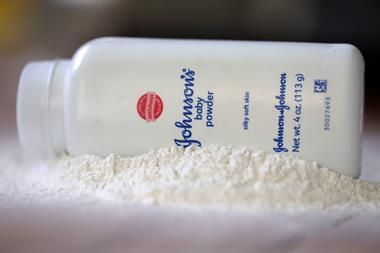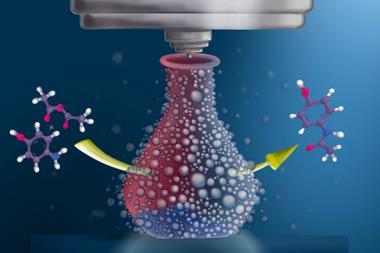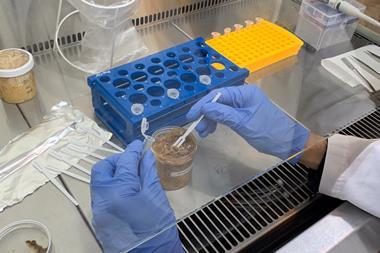Scientists describe the first liquid crystal system that can luminesce in three colours from a single light-emitting centre
Chemists in Japan have created a luminescent liquid crystal that can switch between three different colours when stimulated with heat and mechanical force. A handful of organometallic and organic compounds can switch between two colours, but none between three. The system could open the way to new sensor or display technologies, the researchers suggest.
Yoshimitsu Sagara and Takashi Kato from the University of Tokyo constructed their liquid crystal from an equimolar mixture of two complex polyaromatic compounds, a dumbbell-shaped molecule containing 23 aromatic rings, and a wedge-shaped molecule consisting of a hydrocarbon chain attached to an array containing four rings.
When the mixture is heated to 146?C and cooled back to room temperature it forms a ’micellar cubic’ phase of liquid crystals, and under UV light glows with a reddish-orange colour. If this phase is then heated to 90?C and mechanically sheared, between glass slides for example, or with a spatula, it luminesces with a green colour, the crystalline phase having been changed to ’columnar’. This phase can be reverted to the red-orange cubic phase by heating back to 146?C. However, if either the columnar or cubic phase is taken to room temperature and mechanically sheared, the crystalline system adopts a third configuration and glows yellow. In this way, appropriate sequences of heating and applying a shear force can result in switching between the three colours.

Kato says that the system contains only one type of light-emitting centre - the luminophore - a pi-conjugated moiety containing anthracene groups. ’On the phase transition, mechanical and thermal stimulus induces changes in the arrangement of the luminophores, leading to luminescent colour changes,’ he explains.
Kato adds: ’The most important phenomenon we describe is that tricolour luminescence can be achieved by using a single luminophore.’ Such a system could have practical applications in, for example, structural polymers, Kato suggests. ’The thermal and mechanical stress histories for the materials could be detected by bright luminescent colour changes.’
Flynn Castles, who researches the optical properties of liquid crystals at the University of Cambridge, UK, says: ’The key breakthrough here is the generation of three colours from a single material. From the perspective of display technology, three is important because by combining three primary colours any other colour can be made.’ Nevertheless, Castles adds: ’There is still a long way to go before any luminescent technology can really challenge the might of current liquid crystal displays, at least in conventional applications such as TVs, computer monitors, and mobile phones. However, this study is a step in that direction.’
Simon Hadlington
References
10.1002/anie.201100914






No comments yet